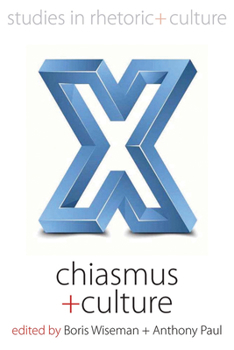Chiasmus and Culture
Anyone who has heard of chiasmus is likely to think of it as no more than a piece of rhetorical playfulness, at times challenging, though useful for supplying a memorable sententious note or for performing a pirouette of syntax and thought. Going beyond traditional rhetoric, this volume is concerned with the possibility of using the figure of chiasmus to model a broad array of phenomena, from human relations to artistic creation. In the process,...
Format:Hardcover
Language:English
ISBN:0857459600
ISBN13:9780857459602
Release Date:March 2014
Publisher:Berghahn Books
Length:264 Pages
Weight:1.14 lbs.
Dimensions:0.6" x 6.0" x 9.0"
Customer Reviews
0 rating





